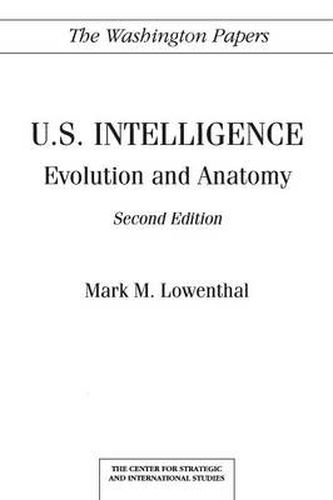Readings Newsletter
Become a Readings Member to make your shopping experience even easier.
Sign in or sign up for free!
You’re not far away from qualifying for FREE standard shipping within Australia
You’ve qualified for FREE standard shipping within Australia
The cart is loading…






No major 20th century power has so short a history of national intelligence agencies or activities as does the United States, and few have been as public or as tumultuous. A major debate has now opened over the future structure, size and role of US intelligence in the aftermath of the cold war. This book is a history of the US intelligence community - as well as a detailed description of the organisation and function of the major components of the community as they existed at the beginning of 1992. The history of the intelligence community can be divided into three distinct periods. From its creation in 1947 until the revelations and investigations of 1974 - 1975, the intelligence community operated under fairly broad grants of authority based on trust. After the Nixon administration, a previously dormant Congress was galvanised into writing new oversight provisions and also taking on a greater role as a shaper and consumer of intelligence. With the collapse of the Soviet Union and the end of the Cold War in 1991, the intelligence community found its role and even its necessity questioned due to the sudden absence of its major target. Lowenthal emphasises that a competent and challenged intelligence capability is an essential part of the US national security structure, despite the status of external events or threats. The major requirement of this structure, he says, is providing timely, objective and pointed analysis to policymakers across a wide range of issues.
$9.00 standard shipping within Australia
FREE standard shipping within Australia for orders over $100.00
Express & International shipping calculated at checkout
No major 20th century power has so short a history of national intelligence agencies or activities as does the United States, and few have been as public or as tumultuous. A major debate has now opened over the future structure, size and role of US intelligence in the aftermath of the cold war. This book is a history of the US intelligence community - as well as a detailed description of the organisation and function of the major components of the community as they existed at the beginning of 1992. The history of the intelligence community can be divided into three distinct periods. From its creation in 1947 until the revelations and investigations of 1974 - 1975, the intelligence community operated under fairly broad grants of authority based on trust. After the Nixon administration, a previously dormant Congress was galvanised into writing new oversight provisions and also taking on a greater role as a shaper and consumer of intelligence. With the collapse of the Soviet Union and the end of the Cold War in 1991, the intelligence community found its role and even its necessity questioned due to the sudden absence of its major target. Lowenthal emphasises that a competent and challenged intelligence capability is an essential part of the US national security structure, despite the status of external events or threats. The major requirement of this structure, he says, is providing timely, objective and pointed analysis to policymakers across a wide range of issues.